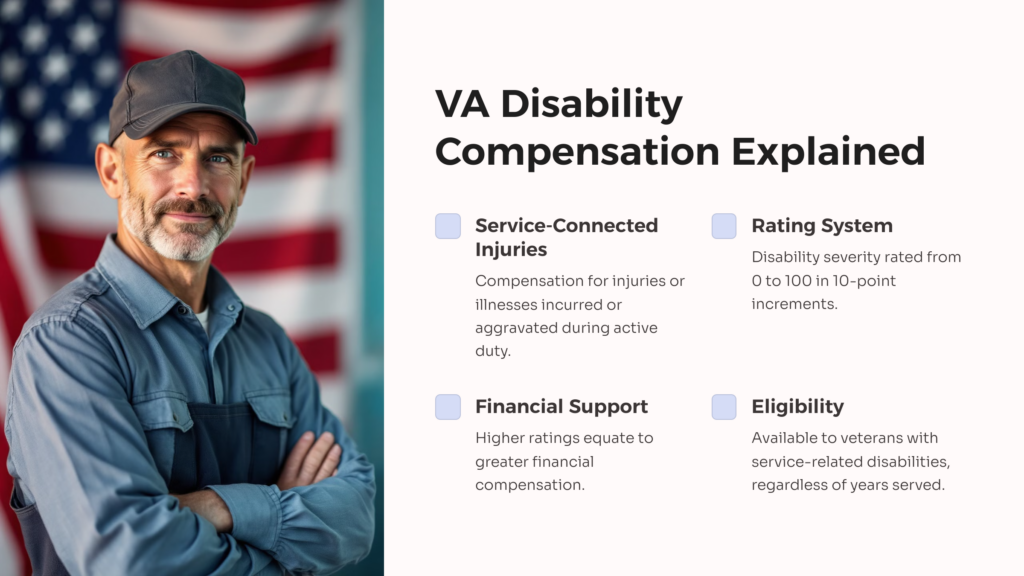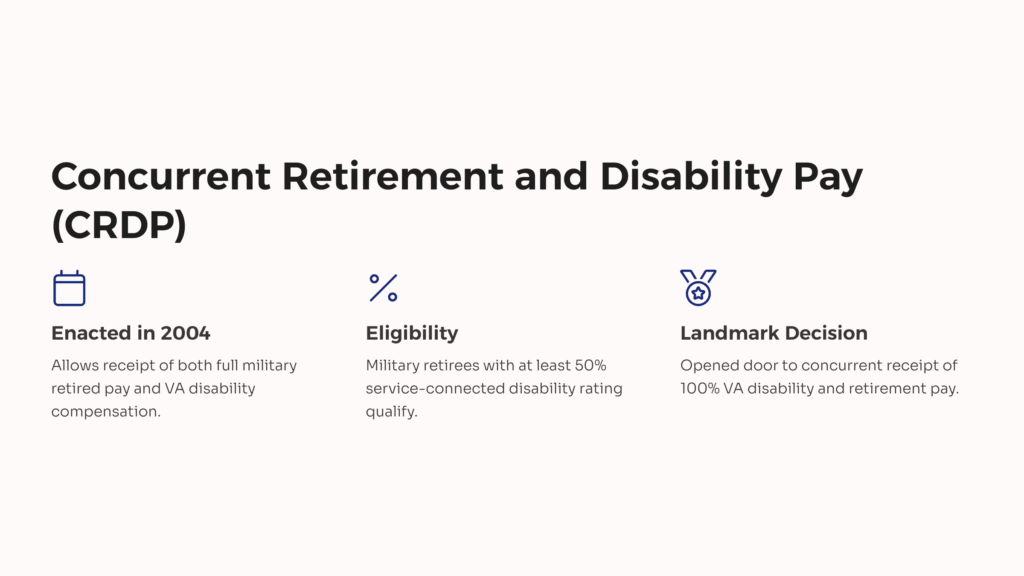Introduction
A critical aspect of life after military service is understanding how to navigate the complexities of veterans’ benefits, including VA disability compensation and military retirement pay. These systems determine the level of support available to those who have served our nation, with varying degrees of support based on specific criteria. By unraveling the intricacies of these two programs and how they intertwine, veterans can best position themselves to take full advantage of the benefits they’ve earned.
The Importance of Understanding Veterans’ Benefits
Understanding the scope of veterans’ benefits is crucial for those transitioning from military service back into civilian life. These benefits, particularly VA disability benefits and military retirement pay, provide financial support that can aid in adjusting to post-military life and managing service-related illnesses or injuries.
What is VA Disability Compensation?

VA Disability Compensation is a benefit provided to veterans who were injured or contracted an illness while on active duty, or had an existing condition aggravated to a debilitating level by their service. The severity of the disability is assessed and then assigned a rating from 0 to 100, increasing in increments of 10. This rating effectively determines the level of compensation received, with higher ratings equating to greater financial support.
What is Military Retirement Pay?
On the other side of the coin, military retirement pay is the pension provided to those who have honorably served in the military for a considerable length of time, typically around 20 years. There are two types of military retired pay: disability retirement and regular retirement. Disability retirement is granted when an individual faces a debilitating injury or illness that prevents continued service, while regular retirement pay is a benefit acquired through long-term service.
The Controversy Surrounding Concurrent Receipt
Prior to 2004, veterans were often limited by legislation prohibiting the concurrent receipt of both VA disability compensation and military retirement pay, a policy colloquially known as “double-dipping.” It wasn’t until the introduction of programs like the Concurrent Retirement and Disability Pay (CRDP) and Combat-Related Special Compensation (CRSC) that it was possible to receive both in some circumstances.
What is the Concurrent Retirement and Disability Pay (CRDP)?

CRDP is a program enacted in 2004 to allow certain military retirees to receive both their full military retired pay from the Defense Finance and Accounting Service (DFAS) and their full VA disability compensation from the Department of Veterans Affairs. To qualify for CRDP, you must be a military retiree with a service-connected disability rating of at least 50%. The program also opened the door to the concurrent receipt of 100% VA disability pay and military retirement pay, a landmark decision in the history of veterans’ benefits.
What is Combat-Related Special Compensation (CRSC)?
CRSC is another program offering “concurrent receipt” benefits, though these payments focus closely on combat-related disabilities. This program, designed to compensate veterans for sacrifice and hardship beyond regular service, becomes invaluable for those with a 100% VA disability rating that is combat-related.
Frequently Asked Questions
Can a Military retiree qualify for both CRDP and CRSC?
A retiree cannot receive both CRDP and CRSC. They would need to choose the benefit which offers them the highest rate of compensation. The decision can be changed once a year, during the “open season,” to respond to changes in the veteran’s rating or the rates of pay.
When can the full VA Disability compensation be received?
Full VA Disability Compensation can be received in cases where the service member is deemed 100% disabled by the VA, and their disability is service-connected.
Conclusion
In summary, receiving both 100% VA disability and military retirement pay is an achievable goal for certain qualifying veterans. However, making a successful VA disability claim is a complex process that requires understanding the various programs and benefits. Receiving every disability compensation benefit to which you are entitled is completely possible, and we at AllVeteran.com are here to help. Take our quiz to get started today.

 AllVeteran.com Advisors
AllVeteran.com Advisors
With expertise spanning local, state, and federal benefit programs, our team is dedicated to guiding individuals towards the perfect program tailored to their unique circumstances.


















